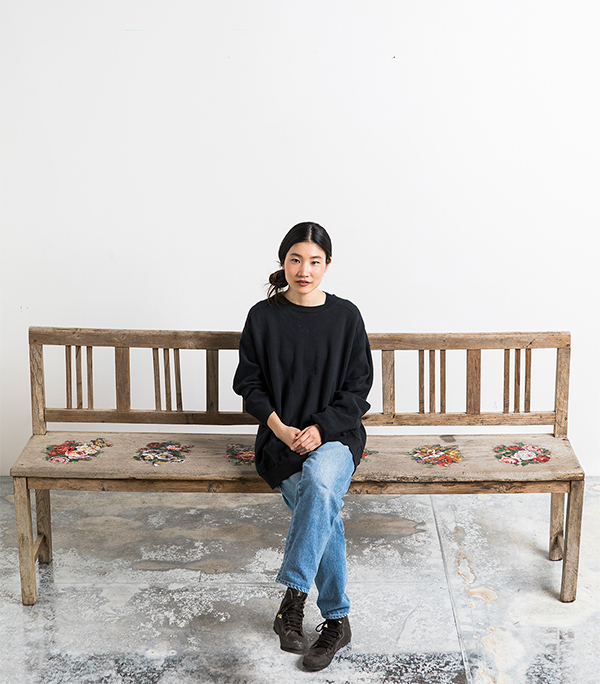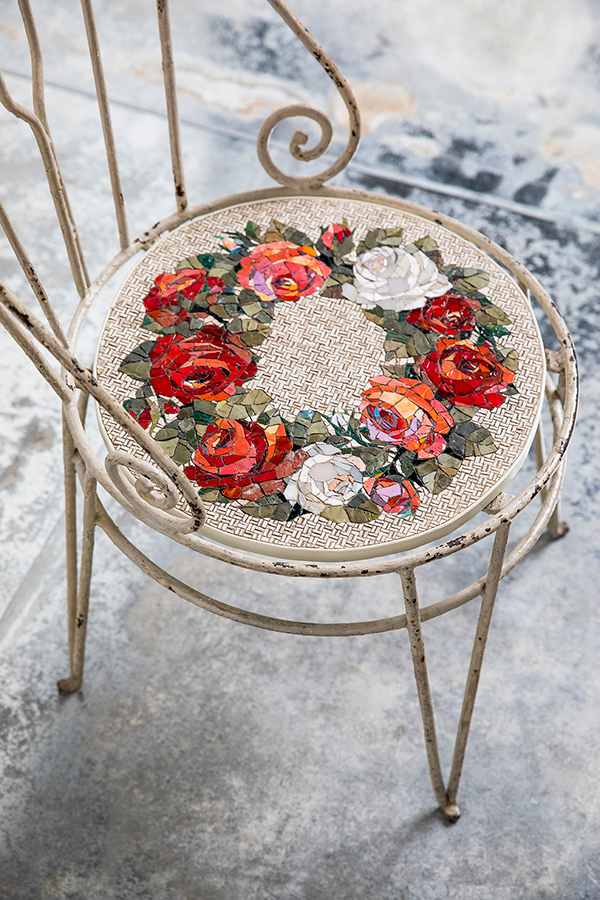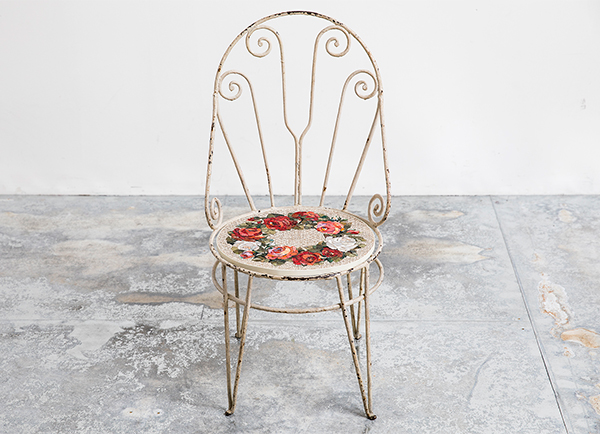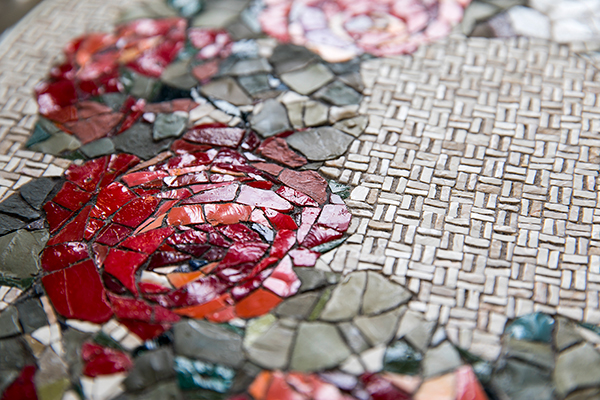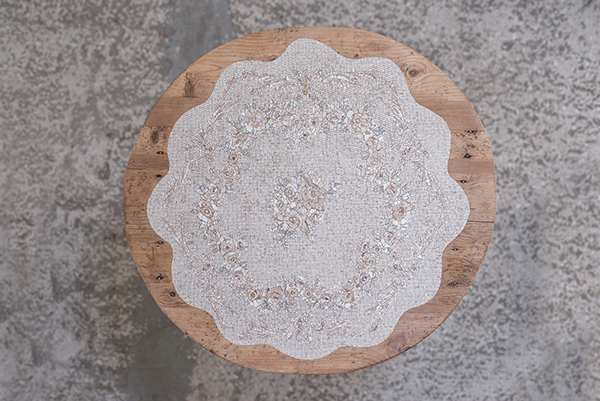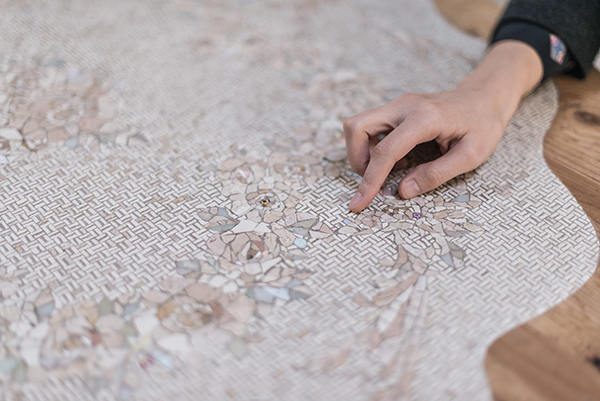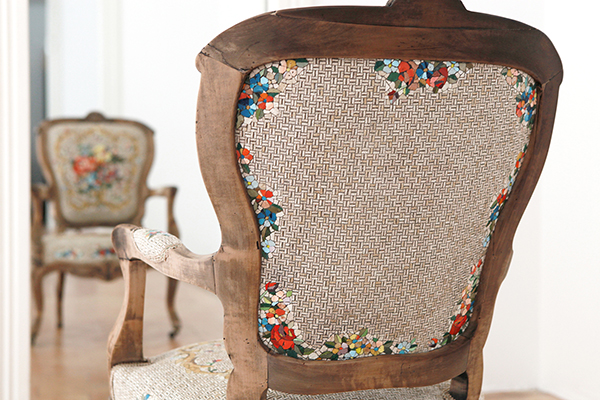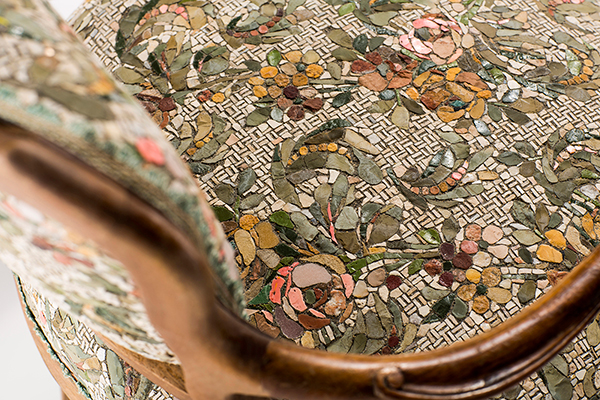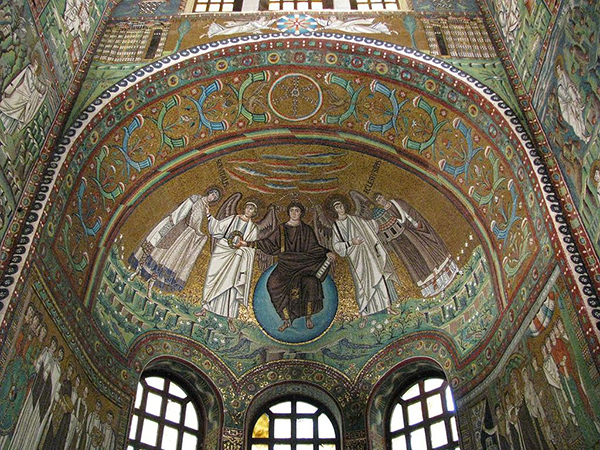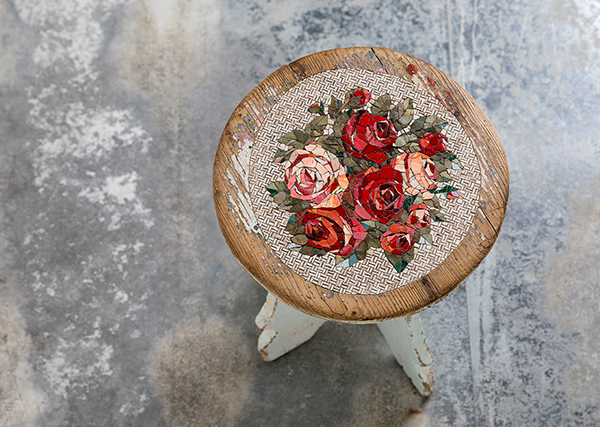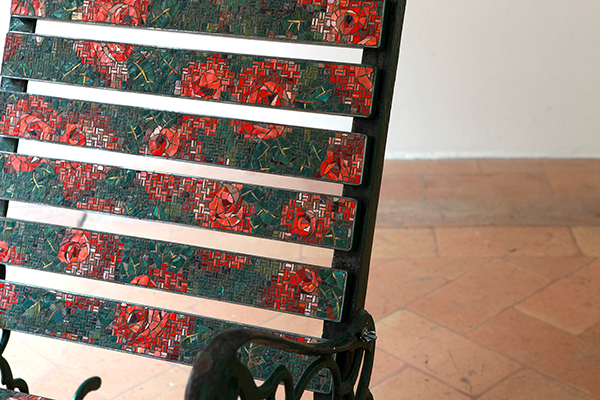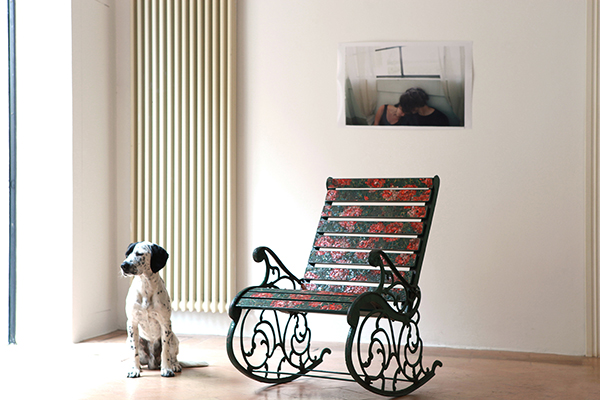Yukiko Nagai relocated from Japan to Italy, to study the traditional art of mosaic at Ravenna Art Academy. After briefly returning to Tokyo, she decided to set up her life in the city of Ravenna. She now makes exquisite one-of-a-kind chairs, tables and benches using antiques that she transforms with mosaic art.
Based around a concept she calls Replacement Materials, Yukiko has learnt to express soft materials such as wood and fur, in stone. Here, she reveals how her mosaic furniture has evolved, along with her love affair with Ravenna, a city whose history of mosaic, dates back centuries.
What sparked your initial interest in mosaic?
I was interested in interior decoration and layout design for shops and interiors, so I decided to study architectural design, interior design and landscape design at an art university in Tokyo.
While I was there, I visited Greece and Turkey, which is where I first saw Byzantine Mosaic art. I became really interested in mosaic tiles. After that, I started to introduce mosaic styles as architectural decoration in my assignments at university.
After graduation, I decided to study in Europe to learn more about mosaic. A number of Byzantine mosaics from the Eastern Roman Empire still remain in Italy, so I decided to enrol in a mosaic course at the Ravenna Art Academy.
Having studied architectural and interior design at university, I wanted to create pieces which consider the relationship between mosaic and furniture or space. I also wanted to make works that are accepted in the field of global design. After a process of trial and error, I created mosaic furniture.
Do you see your work as furniture or art?
Mosaic tiles are generally known as works of art, but all my works are functional pieces of furniture, such as chairs or tables. Because my furniture is made of glass and stone, it’s not always comfortable or easy to use. But I always consider the product’s strength and texture of the surface during the process of production.
I produce furniture that can be viewed as an artwork but also as a piece of artistic, functional furniture when it’s placed in a space.
Can you describe the different stages of the making process?
There are several ways to make a mosaic, but I prefer to use Ravenna’s traditional technique. I prepare a temporary canvas made with lime paste, and then make the mosaic on it. The benefit of using this canvas is that it doesn’t dry like cement. I don’t need to rush to put the pieces on and I can make changes or fix it if I’m unhappy with it. I think the process is similar to that used in painting.
Another benefit is that I can make a flat surface, therefore I can make works like a chair. I cover the mosaic with gauze, and then paint over it with rabbit-skin glue. After the cement has dried, I remove the gauze and glue and wash the surface of the mosaic.
This technique takes longer than others, but I think it really suits me. It takes 2 or 3 months to finish a bench or an armchair that needs a large area of mosaic.
Where do you source the materials from?
The main materials used in mosaics are marble, stone and glass. Italy has plenty of marble, so I go to the local marble shop, select a colour and buy it. I sometimes get lucky and find materials in a container full of scrap stone. I use glass when I want a bright colour, that’s unavailable in stone. Venice is famous for its Venetian glass and there are some factories that make glass especially for mosaics, so I order their glass for my work.
In which environments do you think your works look best?
Mosaic tiles are generally exhibited in art museums, but I prefer not to exhibit my work as art. I want to make works which blend into places, such as shops, galleries, houses and gardens, as architectural or interior decoration, which can brighten up that space.
Where do you find inspiration for your designs?
When I learned mosaic at the Art Academy in Ravenna and came face-to-face with stone materials, I was surprised to see that no two pieces had the same colour, there were thousands of delicate colour tones.
I wondered if all materials in nature, such as stone, might have common colour tones, so I started expressing wood patterns and fur, in stone. That’s how I came up with my current concept, Replacement Materials.
I am greatly inspired by things that are attractive or charming, such as colour tones, shapes and the feel of natural materials, architecture, furniture and textiles when you touch them.
How is your work influenced by the city you live in?
Ravenna is known around the world for mosaics, so there are lots of mosaic artists living there. I can learn a lot by observing their work so closely and getting technical advice from them. The environment inspires me and allows me to concentrate on my work.
There are also a number of Byzantine mosaic murals from the Eastern Roman Empire inside the churches of Ravenna. With their taste for oriental art, they remind me of the mosaics I first saw in Turkey.
Which is your favourite piece and why?
I exhibited my works for the first time at Salone del Mobile in Milan in 2013. I especially loved one of the works, titled ‘Pltrone Gemelle’. Using mosaic techniques, this work truly expresses my brand concept Replacement Materials, which means hard materials such as stone or glass can replace soft materials such as cloth very well. I believe that this work entertained and surprised many people.
Another work named ‘Panchina Bianca’, shaped as a bench, expresses the beauty of wooden materials using only marble. Because of the way I lay the stone, it shows a wooden pattern and its white tone variation creates a very attractive, delicate colour. I am hard on myself and am rarely satisfied with my work, but I really liked this one.
What do you enjoy doing on your days off?
I like to walk around antique markets. As well as looking for antique furniture for my works, I simply love to find antique cloth and small articles. When I see things in the markets all mixed-up and jumbled, I’m visually inspired and stimulated to have new ideas for my work. In summer, I walk around Ravenna’s forests and marshes. I enjoy its beautiful scenery which is a blend of nature and rural living.
What are you working on currently?
At the moment, I am collaborating with a Japanese graphic designer. We are working on a mosaic mural together. As for my mosaic furniture project, I’m working on a piece with a theme of ‘knitting.’ And I’m thinking of having an exhibition in a gallery somewhere in Europe.
Are your works available for sale?
You can see most of my works in Spazio Rossana Orlandi in Milan. My pieces can be bought directly through the gallery. I also do special commissions. In addition to the mural I am working on, I have made mosaic floors for shops in Japan. I continue to make mosaic furniture and hope to sell my work throughout Europe. Some pieces are also available to purchase online through Pamono.*
See more of Yukiko’s work at www.yukikonagai.com
Photo captions
- Yukiko Nagai with ‘Panchina con Bouquet’ from the Flower Patches series inspired by cross stitch techniques
- Detail of ‘Panchina con Bouquet’
- ‘Sedia con Rose Wreath’ antique garden chair
- (as above)
- (as above)
- ‘Merletto su Tavola’ wooden table with floral lace mosaic created from marble and stone
- (as above)
- ‘Poltrona Bouquet’ French antique chair with floral bouquet mosaic design
- (as above)
- ‘Poltrone Gemelle’ detail of armchair with stone fabric upholstery, designed to resemble a soft pillow
- Mosaic ceiling at a church in Ravenna
- ‘Panchina Bianca’ vintage white bench with wood grain recreated in marble and stone mosaic
- ‘Sgabello Rose’ antique wooden stool with stone fabric mosaic seat
- ‘Dondolo Rose’ cast iron antique rocking chair for the garden with ivy and rose design created from Venetian glass tiles
- (as above)
This post contains affiliate links marked with a *
Thanks for supporting Upcyclist.co.uk

